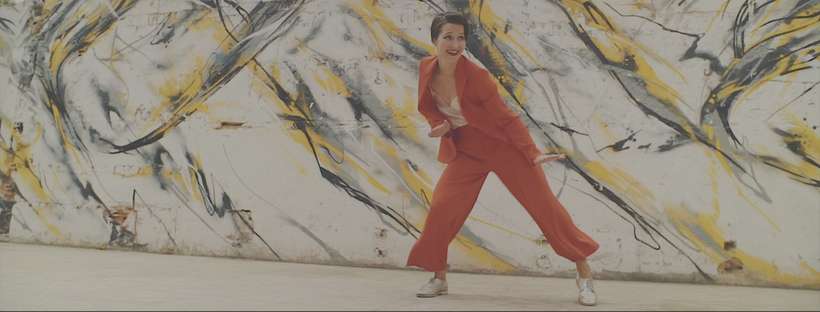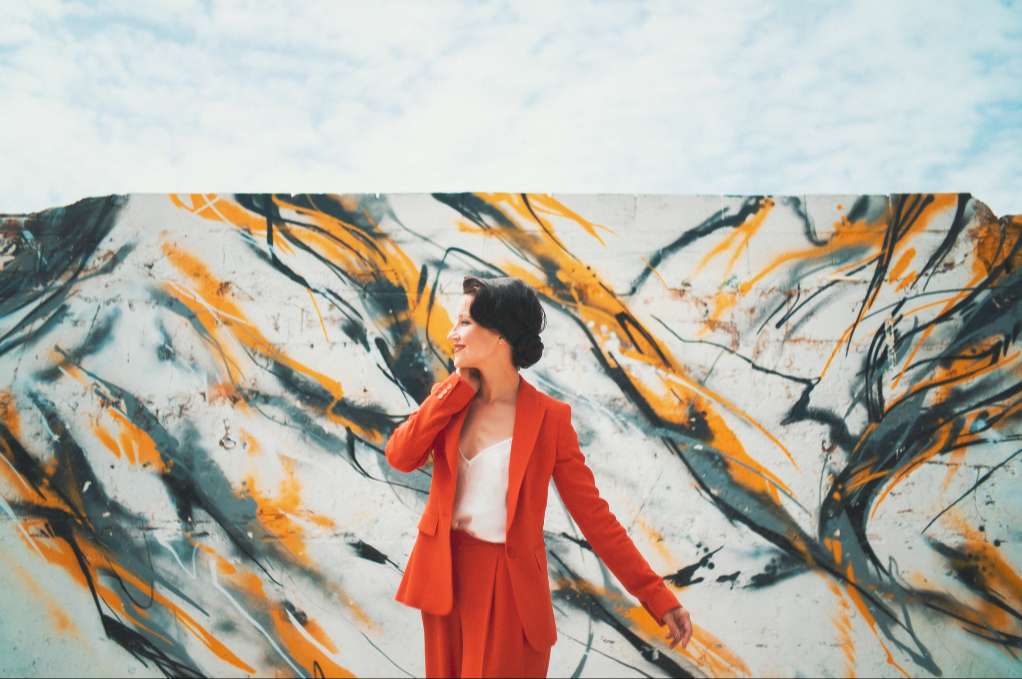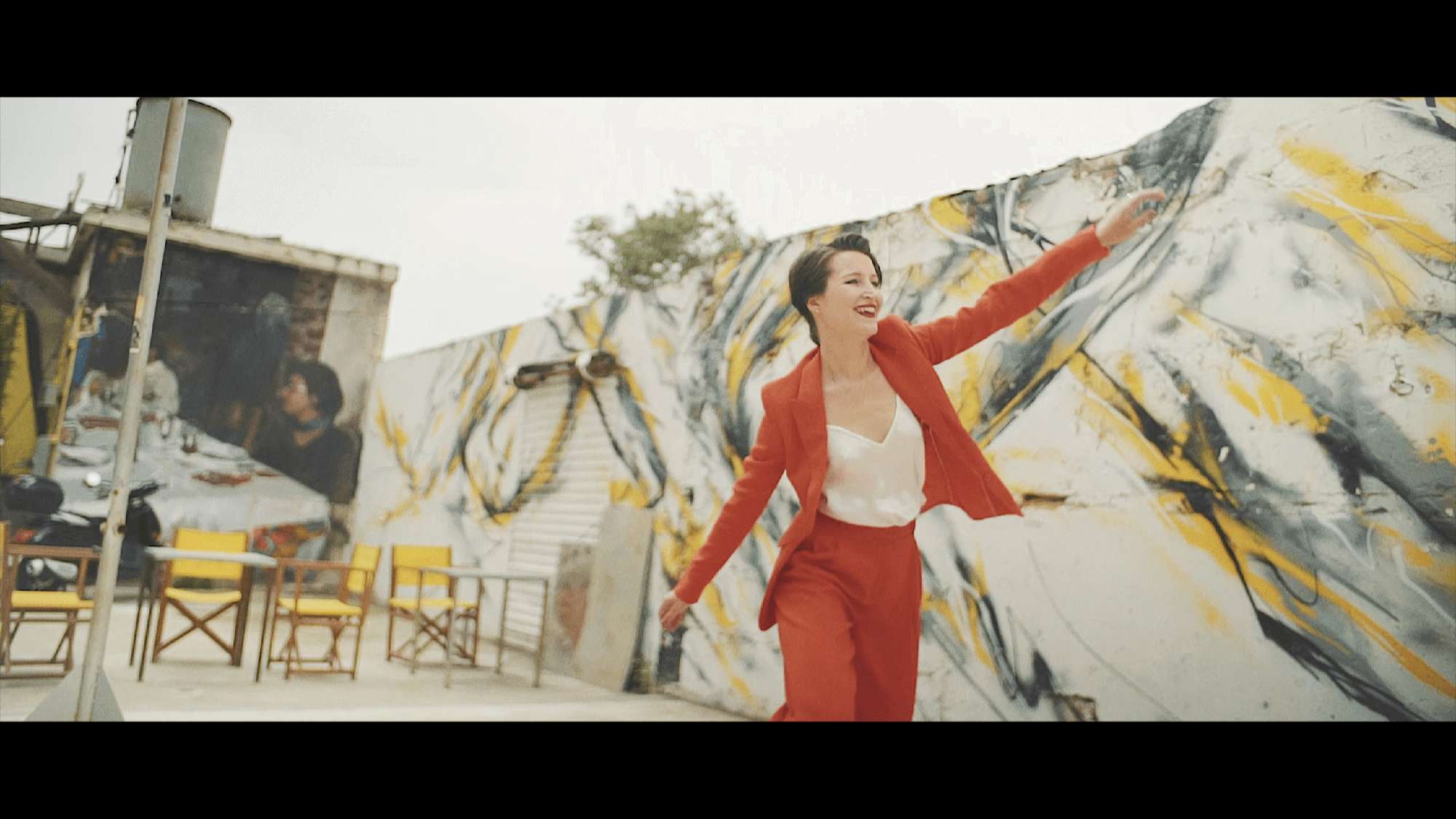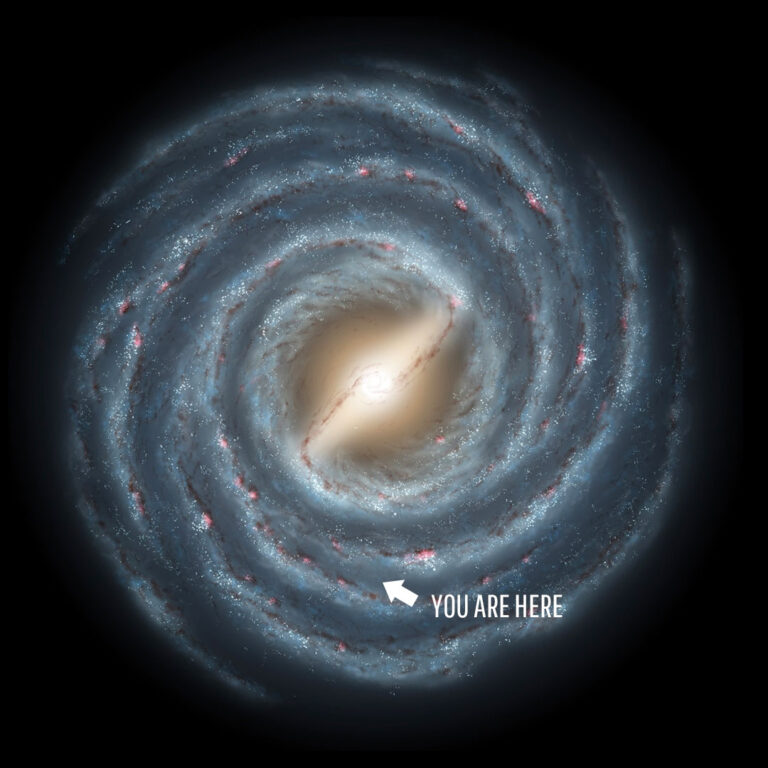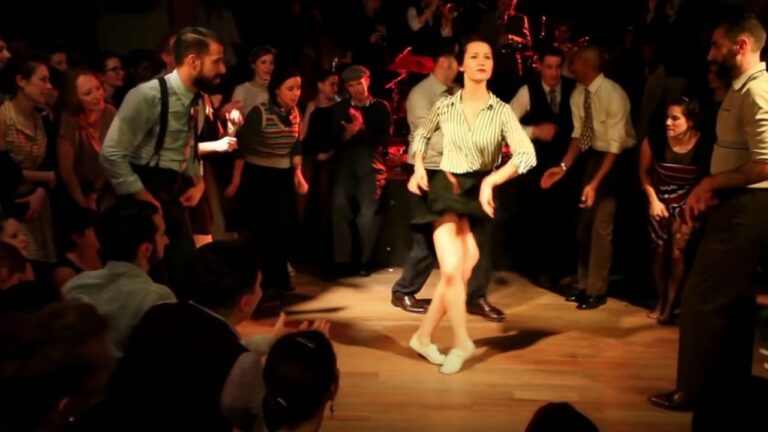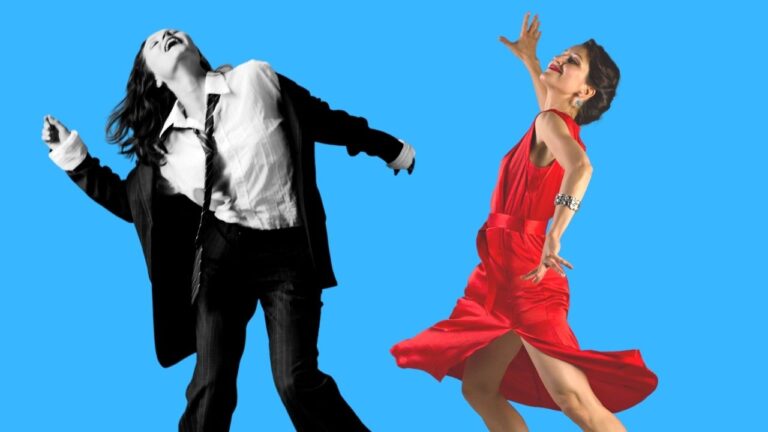Here are 6 major tips and ideas that will help you work towards a wholesome solo jazz dance choreography rather than create just another combination of some classic jazz steps rearranged in a different way. To make sure that each decision in your choreography is a choice and you are saying something with it it is important to think of this tips.
“The Art of Starting or The Magic of Inspiration”
When we talk about creating choreography in solo jazz dance, or creating absolutely anything, there is always a presence of the Mysterious and Charming Angel of Inspiration. I think nowadays there is quite a sober attitude to the magic of inspiration as the main source of any creation. I really like the quote from composer John Williams, who created scores for Star Wars, Harry Potter, Indiana Jones:
The romantic notions of how inspiration comes are just that – notions. Composing music is hard work. Any working composer or painter or sculpture will tell you that inspiration comes at the eight hour of labour, rather than as a bolt out of a blue
John Williams
Another idea concerning inspiration is from the famous Russian writer Nikolai Vasilievich Gogol. I noticed this when I was very young. He spoke about how every day he would sit in front of a white piece of paper. He would sharpen his pencil almost as a ritual to get into the “zone” and think, wait, until the idea or a phrase came, to write it down. The key here is to actually start doing whatever you decided to create. Come to the studio, take a brush, sit in front of the piano….
The art of making a choice
When you go into the creation process on your solo jazz dance choreography you will face one big task – making a choice. Making a choice can be the hardest thing on earth if you have no idea of what is the end picture. Equally it can be quite exciting and enjoyable if you know in which even approximate direction you are going and what you are trying to say.
The creation process is the process of cutting and editing to limit the choices even more in order to use only what is best fitted to the end picture.
Ksenia
Another insightful though on making choices. We might think that when we create choreography that we have an infinite amount of possibilities and option. It might frighten us or vice versa excite. But that is not the truth. As Jonathan Burrows writes in “A choreographer’s hand book”, we can only do what we can do and we can’t do what we can’t do. Very simple idea though so unusual and insightful to think that in creation we are already limited in fact. This idea help to manage how I work with my body and with my skills. Similarly help me in how I envision the choreography and how much I decide to push the boundaries or not.
Below I am going to describe in great detail 6 tips on how to on how to create a choreography in solo jazz dance. Although I number each idea and present it in a linear way in this blog, it’s important to mention that it doesn’t really happen linear when I work. The thought process and direction of attention described in each stage can overlap and happen in a moment. What is important, is to think of these point, ask yourself related questions to make sure that each decision in your choreography is a choice.
1. Analyse of the music
Composing of any art form relies on the same processes. In some sense it is a task of making choices, which is the hardest task of all, I think. From the world of body movement, we chop and cut and choose until we refine what fits the best way to our idea. By making choices I mean the process of narrowing down and limiting your options that will lead you to harmonic and wholesome piece. To help make choices when creating a choreography in solo jazz dance we can use our intuition and creative sense or if those are sleeping – guidelines.
Stage I: Make a general overview of a song
Majority of the time I start with the tune for my solo jazz or any other choreography. I hear a song that inspires and moves me, that makes me want to dance. If you are starting with the music as well, to create a routine or a simple choreography, first of all pick and analyse the structure of your tune. I will give an example of how I work with standard jazz tunes.
- listen to the tune a few times;
- figure out what’s the form. If it’s jazz, blues, something else
- get to know your AABA form or any other form AB, ABC, ABCD etc;
- figure out the solo parts:
- how many solos
- what instruments are soloing
- how long is the solo (ex. over 1 form or more)
- are solos purely for 1 instruments or is there a dialog of 2 or more soloists
- do musicians trade 4’s
- are there any other fills, shifts, bridges
I’d love to give the example of my latest choreography Broad Way, because the memory of creating it is so fresh. The structure of the tune “Broadway” by Oscar Peterson is AABA, it’s a jazz tune. I have the “head” melody of AABA, then guitar solo with some lovely piano fills over 2 AABA forms. Then piano solo over 2 full AABA forms, AAB and then back to the “head” A part, looping the last 4 bars three times for the ending of the tune.
Stage II: Make an Emotional Analysis of a jazz song
Sense your jazz tune from the “emotional” point of view:
- what’s the VIBE (dramatic, funny, lyrical, etc)
- what’s the COLOUR of the tune (dark – light or maybe it has a specific color as well). I like how by feeling or seeing the color in your imagination you can evoke certain emotions. That can help in choosing the pace of the dance, the costume.
- what is the MOOD (in what mood does the song put you, which mood does it create; for instance melancholic, enthusiastic / driven, joyful, preoccupied, humorous, romantic, mellow, etc.)
- what is the DEVELOPMENT of the tune: where is the up and down of the energy and drive; where is the main point from which the tune takes off (or maybe it doesn’t really take off and go on the same level of the intensity?)
When this thought process happened, you know your tune, you have your mood, you can go into the details.
An example:
To me, the first association with the tune for my solo jazz choreography “Broad Way” choreography was “orange sunrise”.The bright color, bleeding on to the grey world. Fresh, free-spirited awakening feel of the sunrise. The joy and tenderness of the beginning of the new day. Combining with the feel of the movement that I wanted to use, inspired by my studies in Senegal. The image of the sun rising on the horizon, that image that one can see in the painting of African savannah. The image that I saw every morning in Toubab Dialaw, waking up at 6 am and stretching, greeting the sun, preparing for the day of classes in Ecole Des Sables. So the keywords are orange, sun, beginning, awakening, tenderness.
Stage III: Go into the Specifics of the jazz tune
When you are diving deeper into your tune, ask yourself if there are any particular interesting RHYTHM BREAKS that the drummer does, maybe you can learn it, scat it and create the dance move exactly to that rhythm.
Riffs
A great inspiration for the footwork, phrasing and rhythm are RIFFS. Notice where, how many, what kind of riffs you have in a tune – maybe you can visualize them in your dance.
In the tune “Broadway” by Oscar Peterson you can hear a very strong riff / melody played by the piano in the “head” in all A parts. Listen to the first AA (B) A (00:10 – 00:51) and the very last, closing A (04:04 – till the end). I learned the melody and dancing it. I find riffs fascinating, powerful and groovy.
Listen here to “Broadway” by Oscar Peterson . Listen and feel are there any particular licks or runs that are catchy and strong.

In my “Broad Way” solo jazz dance choreography there were tons of them for me. Just to give a few examples:
1:07- 1:11 – those hanging notes, swinging brushes of movement. As you can see I really love to give adjectives and / or verbs to what I hear that helps me find the right voicing or movement;
1:42 – 1:50 – a wonderful repetitive run of guitar licks. Staying on one little phrase for a certain time can be really powerful;
2:46 – 2:54 & 3:24 – 3:42 – are one of my favorite moments, 2 parts of intensifying runs. A repetition and persistence of sorts:
Pauses
One of the most powerful rhythms to me are PAUSES. Pay attention if there are some significant pauses in the melody, complete silence, breaks. What are you going to do with them is an artistic choice at each one.
Context
The universe of the CONTEXT can open many doors to your search for the language you will use, costume, mood, story. Investigate if there is any interesting BACKGROUND OR STORY about the tune. Possibly it signifies an important event, describes the story of a person, move or action. If the tune represents a musical era or change of musical tradition, a way of playing you can implement it in your dance.
When you compose a part of the SOLO ask yourself which way does the soloist choose to play his part, what is the musical approach:
- has he chosen to be discreet in his playing;
- does he create a fountain of notes and tricks;
- did he invade with huge drops of chords;
It’s always interesting to dive into the state of the musicians and imagine his body movement. When I hear a certain musical phrase, I imagine did the pianist gently touched the keys as a raindrop or slammed them with a fat tension chord. Then I would listen deeply if he or she chose to play a phrase with loads of space spreading the notes to resonate or he decided to attack the phrase with a lashing rain of triplets. And then I myself as a dancer can choose to support, mimic or oppose it. Sometimes just enough to grab the feel, sentiment and use it, not necessarily dancing the exact solo part.
You can see in this little section guitar is playing lots of notes but I chose to step halftime, because the phrase for me was about the low key and preparation for something that’s about to come, so I prioritised it. Watch here: 1:52 – 2:00
2. Visualise choreography as a whole
There was a time when I started creating my own showcases when I was doing it like a Lego construction. I would just build it step after step, eight after eight, using all the vocabulary I have got in my bucket until it’s all used. This was my dance childhood and to be honest I do not consider that a choreography. I would more likely call it a routine.
Four Women
A choreography to me is something bigger, that has an overall thought, perspective, refined language, chosen image, symbol and etc. The first piece that I created in a different manner was “Four Women” (song by Nina Simone). It grabbed me with its ritualistic repetitiveness, almost a mantra– like melody and the strong story. That is when for the first time I envisioned the whole frame of the piece from the beginning till the end, distinguished the parts and imagined the language I would use for each part in order to underline the differences and at the same time support the common ground. Once this work of envisioning the whole piece was done, then I went inside into each part to find the movement and rhythm.
In the song “Four Women” there is a strong narrative, a story of four different black females. To tell that story in the movement I used the cue from the lyrics and chose to dance the piece facing 4 different directions, for each woman:
Aunt Sara(h) – facing the audience with my back
Safronia – profile to the right supporting the words
Sweet Thing – profile to the left
In suspense, transition before the last story of Peaches, who to me was a representation of all the female characters in the song, I chose movement in a circle uniting the first 3 female characters.
Peaches – facing front to the audience
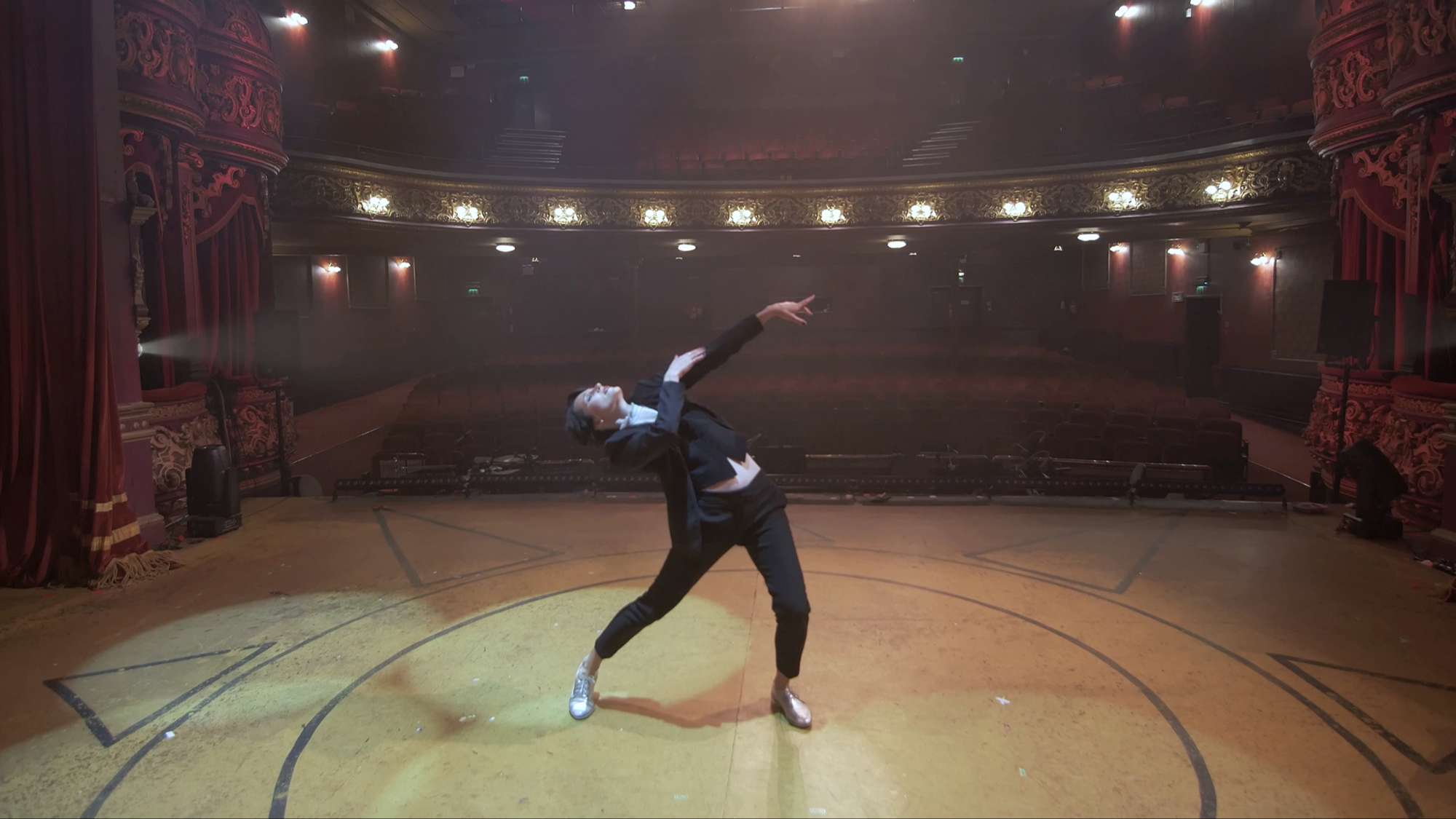
S.T.A.G.E.S
For instance, this choreography of mine, “S T A G E S” had already a very clear development and dramaturgy in the song “Shiny Stockings”.
It had clear ¾ part followed by 4/4, repeating this way twice. ¾ feel carried a sort of explorative mood, where 4/4 part, in contrast, had this confidence. Then the tune goes into double-time feel, that brings excitement and playfulness. After it jumps into a powerful drum section, that has this ritual, madness and challenge feel that takes over the dance and movement to bring it to a higher level. It goes to acceptance and then drops to a slow peaceful jazz feel, where you are swimming in comfort. The final part of the tune is the free-spirited improvisation, where you are in full control and you do not need the beat to carry you through and show you the way. You are the beat itself. Once I heard this and saw the mood of the dance developing through my movement and emotions, I could compose within each part, but the frame and the full development was there.
Envisioning the whole piece, even if you are not sure about the end or start helps you to create perspective, development, and unity without it looking like a broken mosaics of elements stuck together. It helps you create a framework within which it’s easier to work on details. It limits your choices, which is a good thing.
I like to watch my choreographies in my head, in my imagination screen. There you can do anything and you can direct as well.
3. Use improvisation as a way of choreographing in solo jazz dance
I love to start with the improvisation. Sometimes it’s just an improvisation, sometimes I have a specific task for myself depending on the tune. I always film my improvisations so that after the rehearsal I can take a look at the videos and see what speaks to me, which parts I like in order to keep them for future development, or maybe none of it is there yet and I would need to keep searching. With the pieces that I like, I start forming, sculpting and making it mine. By the way, I do not always start from the top. Sometimes there is a part in the middle of the tune that I feel and hear and ready to choreograph. I go with the flow. It doesn’t have to be chronological.
For “Broad Way” my first few improvisations were with a task to use as much traditional African movement as I can. Then I found some moments that really felt groovy and with the music and used it in the choreography.
Improvisation helps me compose with big brushes rather that mili meter by mili meter of steps. It as well helps me avoid being too “mathematical” and predictable for myself. But to go with the feel, mood, color, musical phrases that vary.
4. Find specifics for your solo jazz choreography
Many of the methods I use now are actually to avoid the “mosaic” and “step-based” ways of choreographing (ie. to use all the new steps you know), in other words again to limit your choices. Step-based, mosaic dance pieces all look very similar. Just some groovy stuff put together and that’s it. And if you raffle the steps maybe you can make 10 more routines out of it. That doesn’t interest me. How to make one choreography different from another. Find the specifics for each one, the language, the core. Examples of the specifics:
- Compose a piece of 16 eights and then use only that material for the whole piece. Mix and match it, change rhythms, rotate, bring it up or down…but use only it. Many world class 1h contemporary pieces are based on a short movement sketch that is expanded with different tools.
- Make the core of your choreography for instance step variation (ie. make the fall of the log the star of your dance and play with it in all possible ways throughout). So many benefits to this one. You will open the door to your own curious and innovative laboratory. Your piece will become more personal and creative if you will start playing around and with your “focus move” instead of using tons of others steps.
- Your specific might hide in using directions. All you do for this or that reason you do it using 360 space.
- It can as well be a a choice of a certain specific and constant quality (ie. fluid, soft, robotic, angular, rigid, sporadic, etc)
Think of it, it’s like songs. There are only 12 notes but how many different songs there are and what makes one song differ from the other… – the chord progression and the key. It’s a limitation of sorts.
5. Search for emotional movement
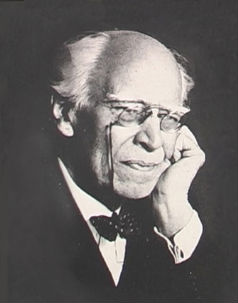
In my teachings of solo jazz dance I juxtapose emotional movement and physical movement. Physical movement is just an action of the muscles and body. It does not carry any other layer. Emotional movement carries a lot of information around the physical movement about the environment, mood, energy, intention and so on.
Create the environment and situation or a task for yourself. All of a sudden you will see how from that seed of context the new world with it’s rules, qualities, colours and characters will grow in your imagination. The great Konstantin Stanislavski, the creator of the method, the technique for actors, taught the difference between an EMOTIONAL & PHYSICAL MOVEMENT. Physical movement is generic. For instance, if I ask 10 people in the room to lift their hand, they will all lift the hand in almost the exact same manner and way. Emotional movement carries a little story – the intention, the purpose, the reason, – all of which create the emotional state. So the magical question is “WHAT FOR?”
Experiment with the emotional movement
Make a quick experiment: you are going to lift your arm, just before ask yourself “what for am I going to lift my arm?” and quickly answer with a VERB (i.e to greet a friend, to touch the sky, to catch a fly, to grab a mosquito, to say goodbye etc…), then right away do the action.
Did you notice, how the physical action turned into emotional action with no words needed. Repeat this several times and change the answer to the question, meaning change the intention. The more you do it, the more start to inhabit the situations with more details. For instance, where are you, who are saying good bye to, do you like this person, are you going to miss him or you are happy they are going away, is is a quick good bye or a long one, when are you going to see them again , etc.
I use emotional movement when I dance any dance form and solo jazz included. Sometimes my subconsciousness and muscle memory bring out interesting ideas without me even thinking. Other times I find them to make my dance my own story and create a different feel, world, impression. I do believe that physical movement by itself in the arts is boring. The dance step for itself can be just a flashy moment but that’s all. When the movement carries something more, even if you can’t put it in the words, it’s much more intriguing and curious.
6. Plan your tension curves
Tension curves are the most essential component of the storytelling in any art form: beginning – development – conflict – suspense – resolution (- post finale). Most often used in narrative forms of art, the idea of tension curves & overall dramaturgy can still be present and powerful in dance.
Create Contrasts
In the case of the majority of swing dancers, we choreograph to an existing tune. If the tune is good and has a beautiful overall dramaturgy in itself we just need to open ears, listen to it and use it. But not all the tunes have it, not all of them have curves of moods, a relationship of tension and release, resolution and so on. That is where we need to be more creative. Simple tools for choreographing the emotional tension can really bring your piece good development, for instance:
- big moves – small moves;
- energetic part – easy/ slow/ relaxed part;
- busy/ noisy part – still/ quite part;
The idea of the dance piece is travelling through curves of drops and lifts. Contrasts that are getting bigger and more dramatic this way. Creating overall dramaturgy is so precious to me and it’s something I try to consider in all the pieces I do.
Remember, repetition is good
Sometimes we are scared to be boring if we repeat the same things within the choreography several times. We should eliminate that fear. Listen to swing or jazz tunes. Things get repeated all the time! All the A sections of the AABA form or famous and beloved by everyone: riffs.* What will we do in the swing without repetitive phrases in music!? They give us several chances to unite with the musicians and “hit” the right moment with our move. And only because they repeat 3, 4, 5 times we can have an opportunity to catch it and surf on the wave of musical heaven.
I was like that at the beginning of my composing journey. I wanted to put all the steps I know to make it exciting. And then I read somewhere that you need to repeat a step, a thing, at least 2 -3 times so that viewer can actually acknowledge and process it. Have you ever noticed how during the jams, competitions or shows, the biggest applause is happening when a dancer, musician repeats, sits firmly on a move/ note and drives it like a groovy, fundamental steady Ferrari. Once again, no need to use all the vocabulary you know in the world out of fear to be boring.
•Riff if a repetitive phrase that is often played by the horn section as a support for the solo. It creates a strong groove, helps to develop and to swing the tune.
For instance “Broad Way” I repeated the whole junks of all the A parts of the “head”. I wanted them to be recognisable and clear as the melody. I call those moments ” coming back home”. After a journey of the whole choreography, I came back to my “home” dance phrase. As well a repeated many other moves for several bars (learning from Oscar Peterson) and following his phrasing.
Final word
These are some of the ideas and methods I use when I work on creating a solo jazz dance choreography. Sometimes I would leave this knowledge out of my studio if I an in a state of flow. I would invite the method if I am stuck in my creative process. It’s good to keep learning and be curious in order to approach each new choreography from a new angle, with a new vision. For me, it’s essential to keep developing, challenging and surprising myself within each new choreography. To create a new character, be in a “new for me” mode. I would style each one and say something with it. The more you develop, the more your choreographies do as well!
Next time you create and feel like you are creating the same jazz routine over and over again, follow these 6 tips. They will guide you to new territories. Equally they will help you create choreography that is not a generic lego constructed of moves, but actually a wholesome piece.
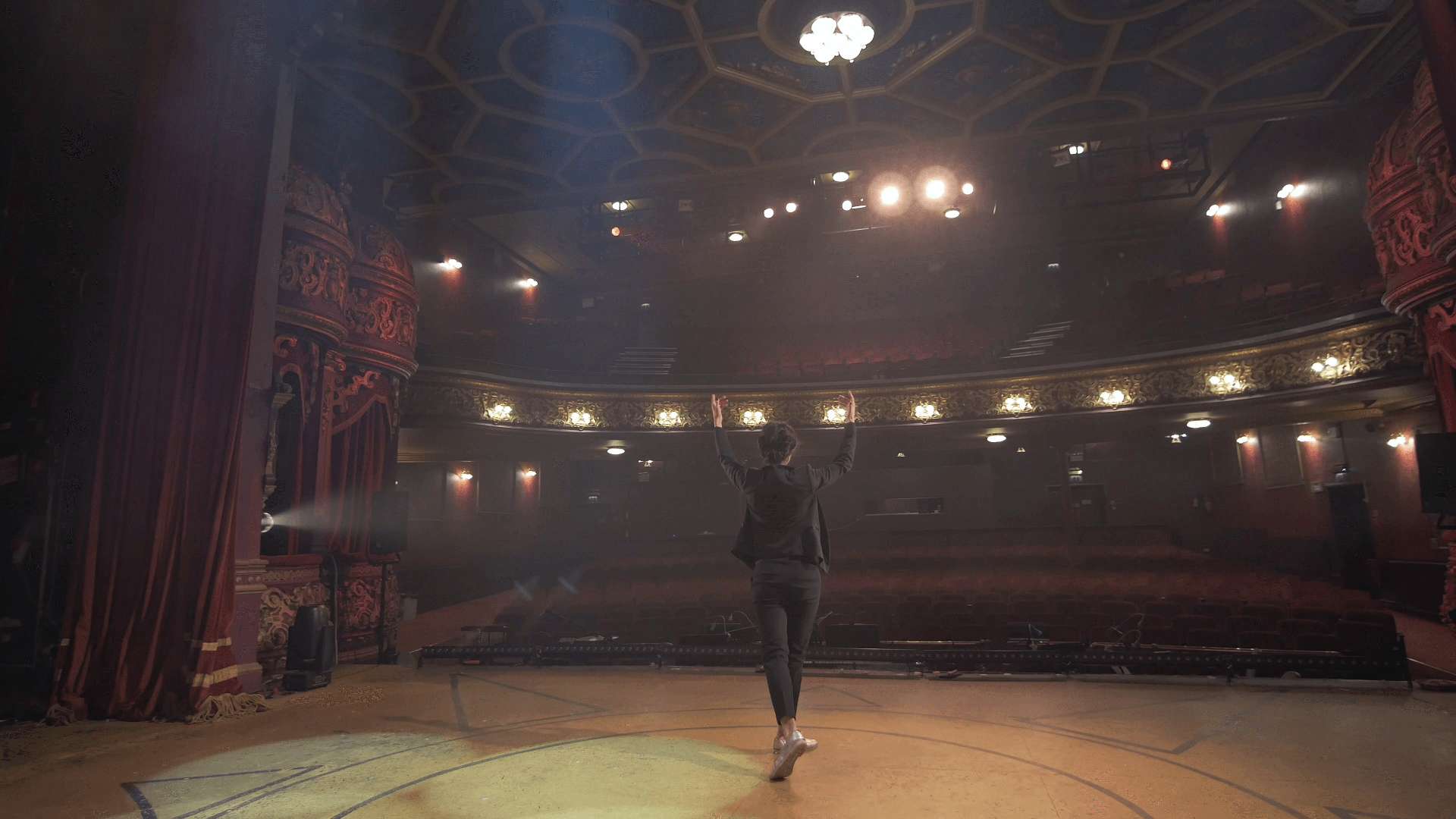
To learn more about improvisation, solo jazz dance and dance in general with Ksenia Parkhatskaya consider signing up for Secrets of Solo online dance classes. You can check subscription plans here.

